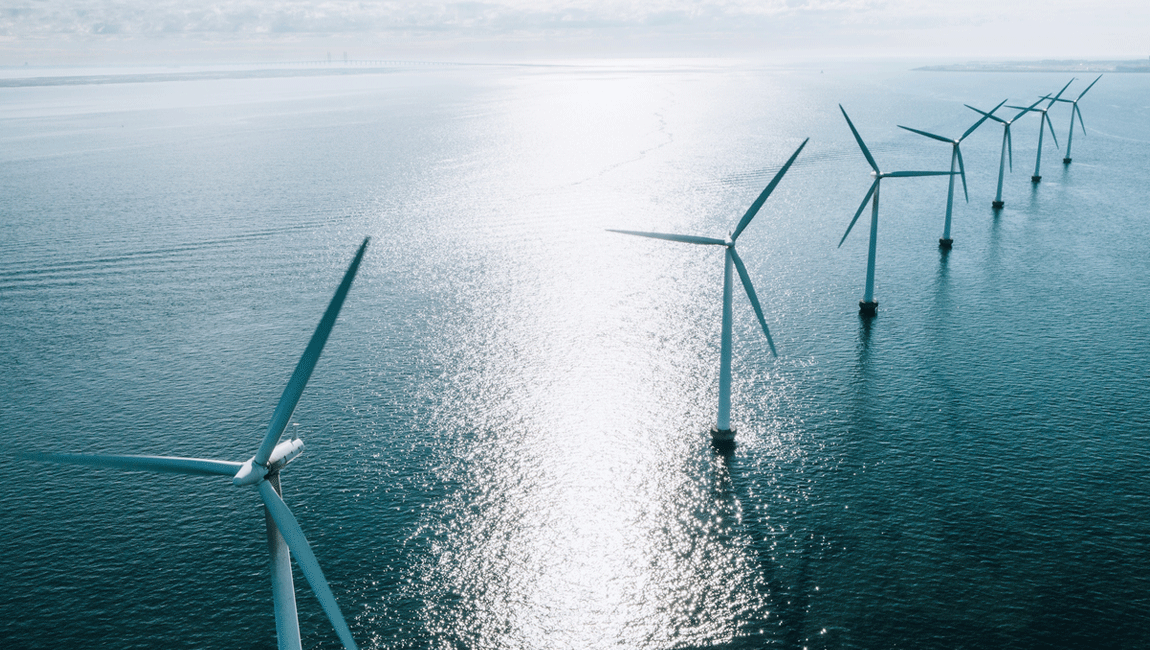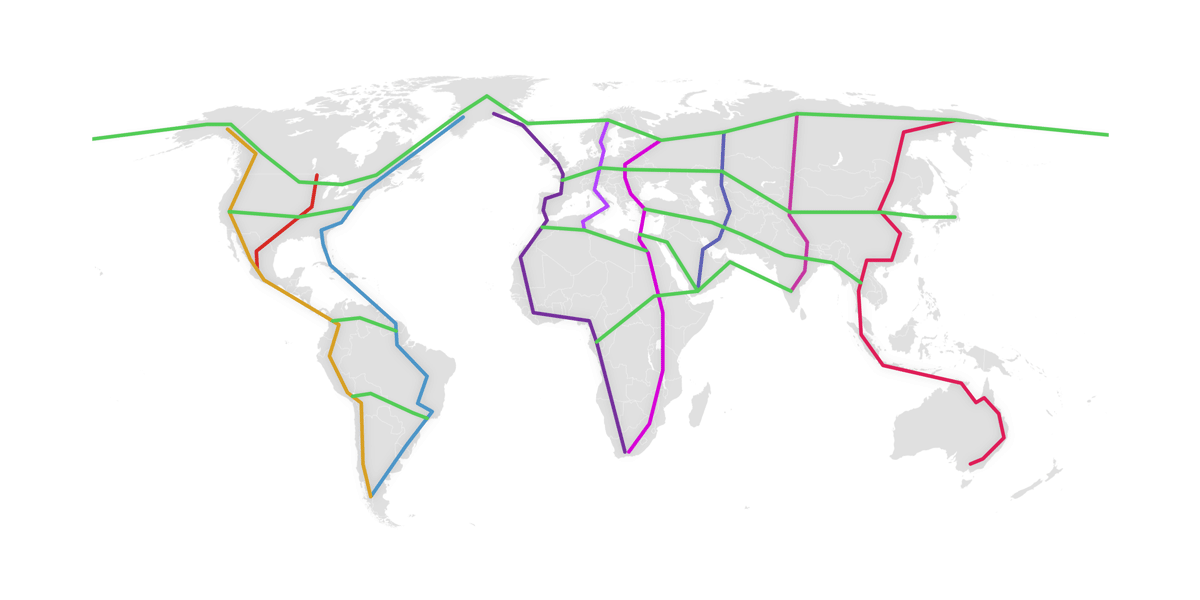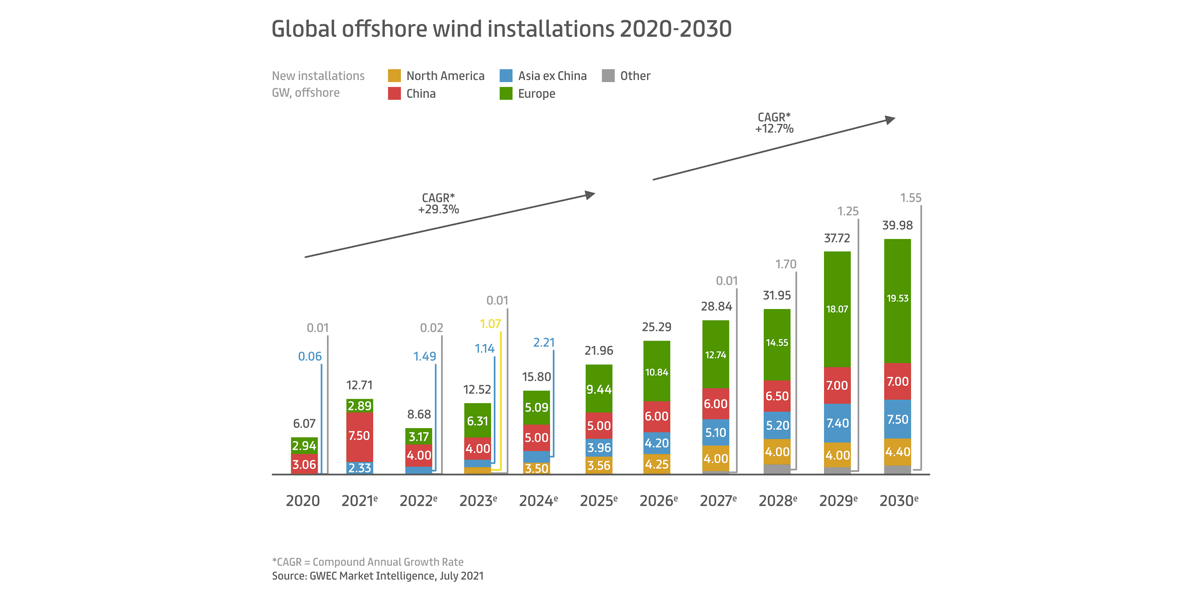Power grid developments to accommodate offshore wind

Wind turbines are moving further out to sea, and more floating wind farms are planned, which means power needs to travel further to the shore. Connecting large amounts of offshore wind energy to - often outdated - grids poses a huge challenge. Integrating offshore wind energy into the power system requires expansion and upgrades. Let’s examine some key challenges and developments.
One major challenge is dealing with Power Quality issues. Wind turbine switching and large variations in generation and consumption of energy can result in significant voltage fluctuations. When turbines are commissioned, voltage fluctuations in the distribution network must be kept within certain limits. IEC 61400-21 - the international standard for measurement and assessment of grid-connected wind turbines - recommends load-flow studies to assess the influence of wind turbines on steady-state voltages. IEC 61400-21 also defines power quality characteristics for wind turbines and suggests methods to assess the impact of wind turbines on grid power quality. Furthermore, the required converters and long cables introduce phenomena such as harmonic distortion and power losses. The new technologies and power electronics used are also often sensitive to voltage disturbances.
Different regions are facing different challenges and coming up with a variety of solutions. In several countries, national transmission operators are planning network rollouts and building lines to the turbines. In the U.K., transmission lines connecting wind farms are sold to independent operators. In the U.S., 30 GW of offshore wind parks are scheduled to be installed by the end of the decade. However, if federal agencies, states and grid operators do not develop transmission plans ready in time, capacity may largely remain underused.
Network developers and regulators have not only pointed out that growing pressure on the network will require grid renewal and a more integrated approach, but also that new (international) interconnections are needed to transmit power from where it’s generated to where it’s needed. According to the UN, “international electricity grid interconnection (…) can (…) improve energy security in the interconnected countries.” A study from Stanford University professor Mark Jacobson modelling energy grids powered by 100% wind, water and sunlight across Western Europe found that increased interconnection between countries would lower energy costs and improve grid stability.
This challenge is stimulating new cooperation. In the North Seas Energy Cooperation (NSEC), for example, EU Member States, are working to develop offshore wind energy generation and transmission infrastructure. The British government, which wants to reach 40 GW of offshore wind by 2030, has studied a coordinated approach to building both offshore wind transmission and subsea cables to other countries. Britain's transmission grid operator found that integrated approach could save consumers 18%, or $8 billion, in CAPEX and OPEX by 2050. A multipurpose interconnector that would link future offshore wind farms in the waters off of both the U.K. and the Netherlands and provide up to 2 GW of power trading capacity is also being studied. In Denmark, the government plans to build energy islands that connect multiple wind farms.
Transmitting energy from offshore turbines to the grid requires a highly efficient, robust, cost effective and reliable technical solution. When offshore wind developers need to decide between HVAC (high-voltage alternating current) and HVDC (high-voltage direct current) cabling, it is vital that the complete system is taken into consideration. Offshore wind farms generally transmit power using high-voltage alternating current, but this is often seen as a technology with inherently high energy losses, whereas HVDC has much lower losses. However, a HVDC system power requires power converters, DC inductors, filters and other components to be placed offshore. But as power and distance increase, it becomes more attractive. HVDC cabling also works for transmission of power over long distances, since it has no reactive power requirements. The trend towards moving further from the shore and building floating wind farms may result in far more HVDC installation. However, we can’t simply say HVDC is ideal for all wind turbine projects and HVAC isn’t: the choice strongly depends on a variety of factors, particularly the distance of a project from shore.
Power generation from Renewable Energy Sources and interconnection among networks are the two main areas where energy links across water is developing massively. Cabling solution manufacturers not only need to provide a complete portfolio of HVAC and HVDC solutions and understand how to couple submarine to onshore grids – they also require extensive, up-to-date knowledge of the wind energy generation assets. Also, experience in working across different nation’s territories at sea is vital.
“Submarine power cables are now among the most important enablers for the energy transition. The ability to deliver energy networks from the point of generation all the way to the point of consumption is absolutely vital to realising this.”

Valerio Battista
Chief Executive Officer Prysmian Group
R&D at Prysmian Group
Prysmian Group has 26 R&D centres in Europe, North and South America and Asia, with over 900 professional researchers, technicians and operators, and an extensive portfolio of more than 5,500 patents. Prysmian Group allocates approximately €100 million per year to Research & Development worldwide.
Prysmian Group and the European Investment Bank (EIB) have finalised financing of €135 million intended to support the Group’s 2021-2024 R&D plans in Europe. This financing represents approximately 50% of the investments planned in Europe up to 2024. The new projects fulfil the goals set in Prysmian’s innovation roadmap and strategy, oriented towards supporting and promoting digitalization and the energy transition. Funding will primarily go to industrial research, innovation and experimentation, and new product development.

The ambitious Global Energy Interconnection plan, supported by 400 institutions, universities, banks and consulting firms that include names such as Tencent, Morgan Stanley Asia, KPMG and Accenture, is developing concepts for connecting almost the entire world to one single renewable energy grid, as illustrated above.
Global offshore wind installations 2020-2030





